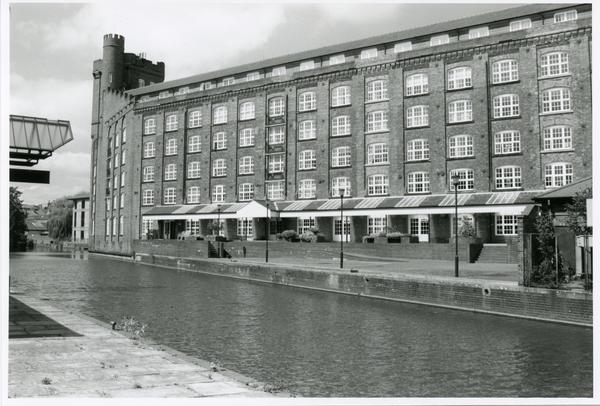Milling Associations: Millers’ Mutual Association (MMA)
As roller milling became established in Britain, problems within the milling industry began to appear, the most serious being the issue of overproduction. The greater efficiency of the new machinery, along with the growth of large milling businesses, meant there began to be an over-production of flour within the country. The effects of this over-production had begun to be felt during the early 20th century. The First World War had provided a temporary respite, as products had to be produced at home rather than imported, but this increase in production ultimately made over-capacity worse. As such, by the 1920s the issue of over-production was serious and the need to find a solution became imperative.

By the 1920s, there were two major powers in the flour milling industry, Joseph Rank Ltd. and Spillers Ltd. If a solution to the over-production crisis was going to be found, then these two firms would have to lead the way. The need for the leadership of these two firms was recognised by others in the industry and in 1927, members of nabim approached Ranks and Spillers asking them to ‘meet and try to formulate proposals for reorganisation of the trade’ (Jones, p.302). Possible solutions had already been suggested, including regulation, restriction or rationalisation, yet no agreement or consensus had been reached. This lack of consensus appeared to also be a problem for Ranks and Spillers, as they struggled to find ‘a common platform’ or to come up with ‘any set of principles which the trade as a whole would accept’ (TM, July 1928, p.330; Jones, p.302). It therefore, began to appear that even the great firms of Ranks and Spillers could not agree upon a solution to the crisis.

1927 had been a year of hope and despair for the industry, as the longed for solution to the crisis was not forthcoming. However, the hope that Ranks and Spillers would form ‘an entente cordial’ which would have a substantial effect on ‘industrial moral’ was fulfilled in 1928 as this year provided definitive proof that Ranks and Spillers were able to work together (TM, July 1928, p.330). In September 1928, Spillers Ltd. and Joseph Rank Ltd. purchased H. Leetham & Sons (their York Flour Mills can be seen in the image on the right), and the seven smaller firms they owned. This sparked hope that Ranks and Spillers may have ‘further joint purposes’ and just over ten months later, the formation of ‘The Millers’ Mutual Association’ (MMA) was announced (Jones, p.303).
The MMA had been formed with the express purpose of dealing with the ‘Rationalisation of the Flour Milling Industry’ (TM, Sept 2, 1929, p.545). This rationalisation programme included the ‘closing down of some of the redundant mills in uneconomic positions’, and in June 1929, the Purchase Finance Co. Ltd. had been registered ‘to deal with the purchase and closure of redundant mills’ (TM, Sept 2, 1929, p.545; Jones, p.303). Another measure introduced was that an ‘output quota was allotted to each member’ which would ‘compensate a member for under-fulfilment of quota and to ‘fine’ it for over-fulfilment’ (Jones, p.303; Davies, p.16).
The announcement about the formation of the Association, in August 1929, was met with a positive reaction. The ‘effective communication with trades unions, newspapers and the editors of bakery trade journals’ resulted in ‘general acceptance and approval’ with James Rank being applauded as ‘the man who saved the industry’ (Jones, p.303; Davies, p.17). In the following few years, about 95% of the flour milling industry in England and Wales, apart from the Co-operative Wholesale Society, joined the MMA.
The creation of this association strengthened the position of British millers and, one author claimed, was in fact ‘essential for commercial stability’ (Jones, p.304). The original intention had been that the association would only last for ten years, but its role proved so important to the running of the industry that it is still in existence today, although with much reduced activity, fully compliant with the competition laws.
Sources:
‘Rationalisation of the Flour Milling Industry’, The Miller, September 2, 1929, p.545.
‘Some Impressions of Convention Addresses, 1928’, The Miller, July 9, 1928, p.330.
‘The Recent Milling Amalgamation’, The Miller, November 5, 1928, pp.639-640.
Davies, P.G., NABIM A Short History (1989).
